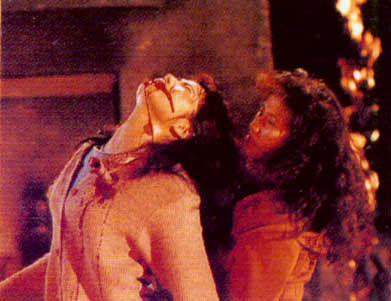
Influence and Identification

It has been shown that the actual influence
of cinematic models on human behavior can be quite complex. Propensity
to imitation is influenced by factors such as the perceived similarity
between viewer and performer as well as perceived consequences. Imitation
of transgressive conduct may be influenced by perceived authority.
Modeled behavior – especially mobilized around primal arousal or emotion
– can briefly alter general conduct tendencies but is unlikely to result
in either direct identification or imitation. Studies of film violence
do not necessarily suggest direct imitation (Note
1). Consequently, complex observational
learning phenomena are likely to operate even in relatively simple film
texts. Simplistic theories of viewer identification (according to
gender or function) overlook the critical elements of perceived similarity
and perceived consequences. Clearly, the reading of a particular
text is likely to be negotiated according to momentary responses and narrative
contingencies. The extent to which viewers respond favorably to a
particular text or character may depend on this interplay of factors.
As Clover (Note 2)
has observed, mass film audiences – including males – respond positively
to the character of “Ripley” as a strong female hero in the Hollywood “Alien”
series. Knowledge of observational learning suggests that the
foregrounding of mortal threat with powerful contingencies of escape and
survival are more likely to account for this response than the gender of
either the character or the spectator. Some viewers may root for
“Ripley” despite her gender, others because of it. The basic point
is that when both gender and basic survival are foregrounded, the specific
focus of viewer sympathy cannot necessarily be assumed to be gender based.
1. See Dave Grossman, On Killing: The
Psychological Cost of Learning to Kill in War and Society. Boston:
Little, Brown, 1996, pp. 306 – 332 for a consideration of the effects of
vicarious role modeling and conditioning provided by violent films.
2. Clover, op. cit., p. 46.